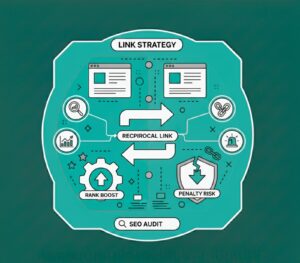Content Refresh Strategy: How Updating Old Content Boosts SEO Rankings
Blogs | Category
Written By: Lauren Davison
Introduction
Many websites have a backlog of past work that sits and collects dust. The forgotten pages in your library contain hidden wins waiting to be discovered. Instead of always recreating new posts, you can utilise a Content Refresh Strategy to maximise performance. Updating what you already have uses less time, wastes less, and can produce faster SEO growth. In 2025, this will be one of the smart things any website can do.
Table of Contents
Why Old Content Loses Its SEO Value Over Time
Algorithm Updates and SERP Competition
Search engines never stop changing their rules. Every few months, Google updates its system to reward better quality, meaning old pages might suddenly look irrelevant. New competitors appear with fresher content, updated links, and stronger signals. Without updates, those pages drift down search rankings even if they were once your top performers.
Outdated Information and Broken Links
Readers notice when information feels off. Old numbers, broken links, and dated references make your article look ignored. A small error can quickly break trust. Fixing those simple issues like updating stats, replacing links, and adding new context gives readers confidence your page is current and valuable again.
Declining Click-Through Rate (CTR)
Search and reader behaviour evolve, leaving once-popular headlines outdated. Searchers scroll past titles that sound generic or overused. Adjusting your title, description, and intro to fit modern language helps you grab fresh attention.
How Updating Old Content Helps Improve Rankings
Improved Relevance and Freshness Signals
Search engines attract active content. When you update your posts, Google sees new edits, images, or data and reevaluates their importance. This simple signal boosts visibility. It’s proof that your content refresh strategy keeps your site alive and relevant in a crowded field.
Enhanced User Experience
Refreshing content isn’t about stuffing in new words. It’s about improving how people experience it. Add clearer headlines, newer visuals, shorter sentences, and flow that’s easy on the eyes. Use spacing and bullet points to make the piece easy to skim. When navigation feels natural, visitors stay longer, and that alone helps rankings rise.
Increased Dwell Time and Lower Bounce Rate
People stick around when information feels up to date. A visitor noticing recent examples, new statistics, or helpful visuals tends to keep reading. That extra time spent on-page tells Google the content has real value, helping your site earn higher search results placement.
What to Look for Before Refreshing Old Content
Analyse with Google Search Console and Analytics
Start by scanning performance data to review impressions, bounce rate, and traffic trends. Posts that lose momentum are your update targets. Dig deeper into keyword reports to see what terms dropped or where you lost ground to competitors.
Check Keyword Performance and CTR Trends
Keyword popularity shifts constantly. Words that once drove thousands of visits can shrink fast, and you may see low click rates or high impressions with little engagement. Adjusting a few subheadings or replacing outdated phrasing with a more keyword-focused approach can restore lost traffic.
Assess Backlink Profile and Engagement Metrics
Not all content needs touching. Check which pages still pull backlinks or steady clicks. Leave strong performers alone and focus on underperformers instead. A balanced approach keeps your domain authority stable even during heavy updates.
Step-by-Step Process to Refresh Old Content
Update Outdated Information and Stats
Accuracy is everything. Replace outdated statistics, expired policies, or brand examples that no longer exist, and use reliable data to help gain trust. Use new sources, recent studies, and current numbers to make information feel alive again.
Reoptimize for Search Intent
What users wanted a few years ago may differ from what they want now. Some search for comparisons, others wish for quick answers or how-to details. Rewrite or expand sections to match what people currently expect. Meeting intent correctly makes your article more valuable than a brand-new one from scratch.
Add Multimedia and Internal Links
Photos, charts, embedded videos, or infographics transform a plain post into something engaging. Insert callouts, content boxes, or quotes for variety. Link internally to your other new posts to keep visitors moving across your website instead of bouncing out.
Reindex Your Page
After big updates, submit your refreshed URL to Google Search Console. This fast-tracks reindexing, so changes appear in search results sooner. It’s a simple final step that many overlook.
Common Mistakes to Avoid When Updating Old Content
Changing URLs Without Redirects
If you need to change the link to a page, make a 301 redirect. Search engines and users alike lose sight of the original post without it, which causes your traffic and ranking to plummet overnight. Redirecting wisely safeguards your gains
Keyword Stuffing or Over-Optimisation
Including your primary keyword in every sentence makes the writing forced and unreadable. The first step to writing that readers genuinely want to read is effective SEO. Repeatability is not the emphasis in the modern content freshness strategy, but flow and usefulness.
Ignoring Mobile Optimisation and Page Speed
After improvements, open your site on mobile devices. Does it load fast, or does text fit the screen? Many lose traffic from slow-loading pages or oversized visuals. A small speed fix can make a huge difference in user satisfaction.
Measuring the Impact of Content Updates
Use Before-and-After Data Comparisons
Take notes before editing by recording page views, rankings, and average time on page. After rolling out your refresh, track changes weekly. Even modest growth within a month is proof that the update worked.
Track Keyword Improvements and CTR Growth
Some changes bring quick wins. Keep an eye on which target phrases rise, drop, or recover. Click-through rate growth tells you how better headlines and snippets attracted more eyes.
Monitor Bounce Rate and Conversion Lift
Higher dwell time often means visitors are reading more deeply. But go further—see if they now complete goals like form submissions or product inquiries. That’s when your refresh truly turns into measurable ROI.
Future-Proofing Your Content for Long-Term SEO
Create an Annual Content Audit Calendar
Create a yearly refresh plan and set quarterly reminders to review your top pages. Small updates made often prevent sudden ranking drops. A steady update schedule keeps your content stable and saves you from last-minute fixes.
Incorporate Evergreen Topics and Semantic Keywords
Blend fresh updates with long-lasting themes. To attract more general search intent, include niche-related semantic keywords. For example, incorporating related subjects like user intent or AI-driven optimisation increases reach if your article about digital marketing trends discusses algorithm changes.
Use AI Tools Wisely for Updates
Don’t rely on AI analytics tools to change your voice; they can only help you spot weak points, such as dwindling keywords or flimsy paragraphs. AI should be used as a tool, not a voice; your brand’s tone should remain genuine and human.
Bonus Tip
Refreshing content isn’t just updating numbers; it’s a mindset. The goal isn’t to patch holes but to rebuild trust with modern readers. Add examples that reflect fresh realities. Reframe stale arguments by using visuals that tell a stronger story. Every edit should make the piece feel reborn rather than recycled.
Conclusion
Old content can be transformed into a living asset that continuously increases traffic with a clever content refresh strategy. Refine and revitalise what is already on your website rather than chasing countless new subjects. Rankings, audience time, and conversions can all increase significantly with minor changes.
By applying careful content optimisation techniques, staying adaptable, and testing each improvement, you’ll notice how easy it becomes to improve Google rankings without overproducing. The web rewards relevance and effort—and nothing proves that better than a page that’s been given new life.
Talk to our PPC specialists today and start growing smarter.
Frequently Asked Questions
- What is a strategy for content refresh?
It involves adding fresh information, images, and keywords to outdated blogs or web pages in order to improve user engagement and SEO.
- How frequently should I update the content on my website?
Every six to twelve months, or whenever you observe a decline in traffic or keyword rankings, review important pages.
- Can Google rankings be raised by updating content?
Yes. Google interprets updated content as relevant, which aids in a page’s recovery or ascent in search results.
- What old posts should I update first?
Before making changes to the structure or images, start with out-of-date statistics, broken links, and weak headlines.

Written by - Lauren Davison
Introducing Lauren – one of our content writers who has a flair for SEO and creative strategy!
With a Master’s Degree in Creative Writing, Lauren has niched down into SEO and content writing.
Outside of work, she loves watching the darts, reading and the pub on the weekend.
Want some more?
Latest Insights & News

Revolutionising Marketing: The Rise of Situational Content Strategies
Situational content strategies involve tailoring content to specific moments, contexts, or audience behaviours. By aligning content with real-time trends, seasonal needs, and user intent, brands can increase relevance, improve engagement, and strengthen SEO performance.

Smart Ways to Identify and Fill Content Gaps Fast: A Complete Strategy Guide
Content gaps refer to missing information, unanswered questions, or underserved topics in your existing content. Identifying these gaps helps you create targeted, high-value pages that improve search visibility, satisfy user intent, and outperform competitors.

Reciprocal Links in SEO: Do They Still Boost Rankings or Risk Penalties?
For the keyword “reciprocal links SEO,” focus on explaining how reciprocal linking works today. Reciprocal links are not harmful by default, but Google can flag excessive or manipulative link exchanges. To stay safe, only exchange links when they are contextually relevant, natural, and valuable to users.




